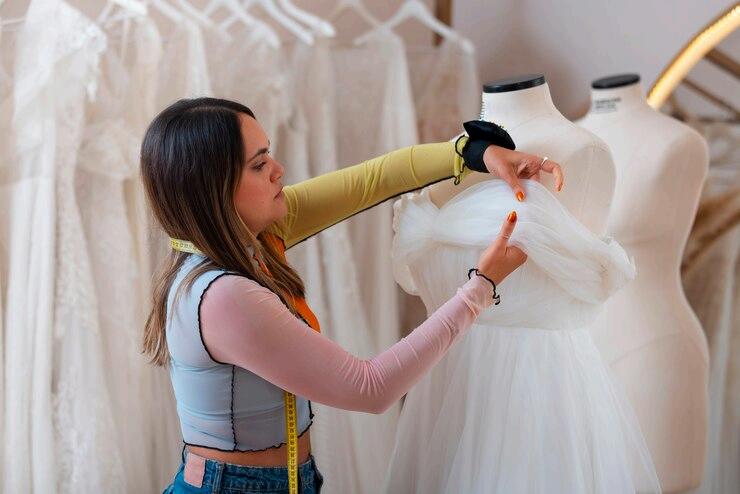Your wedding day is one of the most significant moments of your life, and every detail should reflect your unique style and personality. One of the most critical aspects of your bridal look is ensuring your wedding dress fits perfectly. This is where wedding dress alteration comes into play, turning your gown into a flawless masterpiece that accentuates your beauty.
WHYWEDDINGDRESSALTERATION ISESSENTIAL
Wedding dress alteration isn't just about adjusting the size of your gown; it's about tailoring it to your body and ensuring every element flatters you. Whether you've bought your dress off the rack or inherited a family heirloom, alterations are key to achieving that pictureperfect fit. A well-altered dress can make all the difference, providing comfort and confidence as you walk down the aisle.
THEPROCESSOFWEDDINGDRESSALTERATION
The wedding dress alteration process typically begins several months before your wedding day. Here’s a breakdown of what to expect:
Initial Fitting: During your first fitting, the tailor or seamstress will assess the dress and discuss the alterations needed. This might include taking in or letting out seams, adjusting the hem, or customizing the neckline. 1.
Subsequent Fittings: You’ll likely have two to three more fittings as the alterations progress. These appointments ensure the dress is shaping up perfectly and allows for any final tweaks. 2.
Final Fitting: The last fitting usually takes place a few weeks before the wedding. By this point, your dress should fit like a glove, with all alterations completed to perfection. 3.
COMMONWEDDINGDRESS ALTERATIONS
Every bride and dress is unique, so the alterations required will vary. However, some common wedding dress alterations include:
Hem Adjustments: Ensuring the length of the dress is just right, whether you’re wearing flats, heels, or something in between.
Bustle Creation: Adding a bustle allows you to lift the train of your dress for the reception, making it easier to move around and dance.
Taking In/Letting Out: Adjusting the sides of the dress to ensure it hugs your body perfectly without being too tight or loose.
Strap Adjustments: Ensuring straps are comfortable and secure without slipping off your shoulders or digging in.
Neckline Alteration: Modifying the neckline to better suit your style or comfort level.
CHOOSINGTHERIGHTSEAMSTRESSFORYOURWEDDINGDRESS ALTERATION
Selecting a skilled and experienced seamstress is crucial for a successful wedding dress alteration.
Look for someone who specializes in bridal gowns, as these garments require a delicate touch and a deep understanding of intricate fabrics and designs. Reading reviews, asking for recommendations, and scheduling consultations can help you find the perfect professional to entrust with your dress.
WHENTOSTARTYOURWEDDINGDRESS ALTERATIONS
Timing is essential when it comes to wedding dress alterations. It’s best to start the process at least three to four months before your wedding day. This timeline ensures ample time for multiple fittings and any unexpected adjustments. However, if you’re on a tighter schedule, many seamstresses offer rush services to accommodate lastminute needs.


